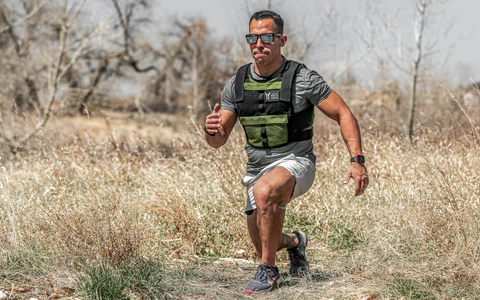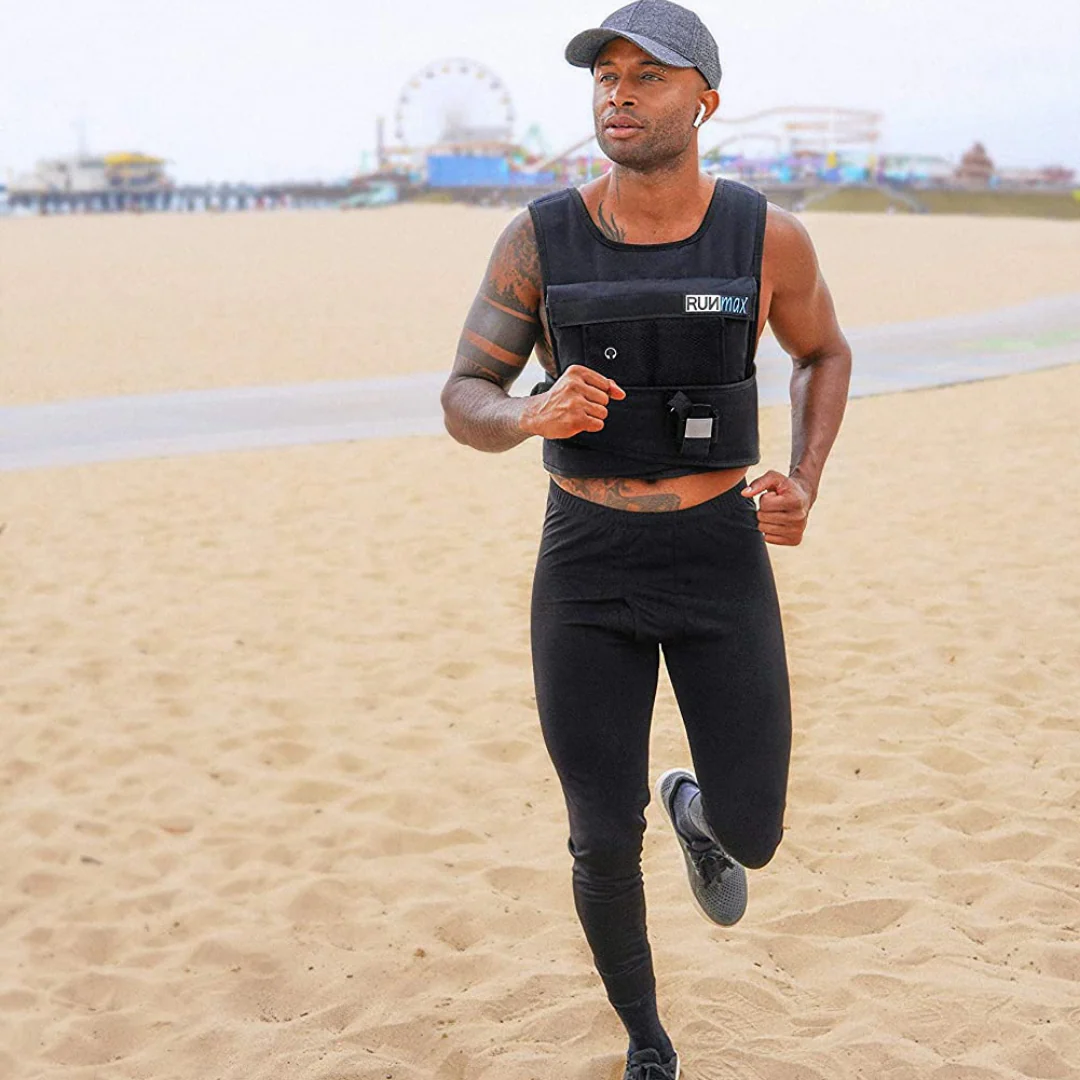
Weighted Walking: The Simple Strength Upgrade
Weighted walking, also called rucking, turns one of the most basic human movements into a full-body training tool. The concept is simple. You wear a backpack with moderate weight and walk. What began as a method of military conditioning is now supported by sports science and used for cardiovascular fitness, bone health, and sustainable strength.
Weighted walking bridges the gap between strength training and cardio. It raises the heart rate more than regular walking while remaining low-impact and joint-friendly. Over time it strengthens posture, muscles, and bones without requiring complex equipment or gym routines.
Why Added Weight Matters
When you walk, your body handles roughly 1 to 1.5 times your body weight in ground reaction force. Adding external load increases that mechanical stress just enough to trigger adaptation. The key benefit lies in progressive overload applied safely through daily movement.
Moderate loading increases heart rate, oxygen consumption, and muscle recruitment. Studies show that carrying additional weight during walking can increase energy expenditure by 15 to 30 percent compared with unloaded walking (Miller et al. 2009). That means you build endurance and strength simultaneously.
The mechanical stress also benefits the skeletal system. Weight-bearing activity signals bone cells to maintain density, reducing age-related bone loss and fracture risk. This is especially useful for adults who may not engage in high-impact exercise.

The Short Guide
If your goal is general fitness
Carry a light pack, around 5 to 10 percent of your body weight, for 30 to 45 minutes at a brisk pace. This boosts cardiovascular health and strengthens postural muscles without fatigue.
If your goal is endurance
Increase walking distance rather than weight. Steady pace over time builds aerobic capacity while still challenging the legs and core.
If your goal is strength
Gradually add load up to 15 or 20 percent of body weight. Keep duration moderate and focus on upright posture. This helps develop back, shoulders, and leg muscles safely.
If your goal is bone health
Use shorter, regular sessions with moderate load. Consistency of mechanical stimulus matters more than intensity. Weighted walking two to four times weekly can preserve bone density in older adults (Kohrt et al. 2004).
How Weighted Walking Improves Health
Cardiovascular Conditioning
Carrying weight increases metabolic demand. Heart rate and breathing rise, improving aerobic efficiency. A study comparing loaded and unloaded walking found that even a 10 percent body weight load significantly increased oxygen consumption and heart rate (Miller et al. 2009).
Postural and Core Strength
A properly fitted backpack activates stabilizing muscles in the spine, abdomen, and hips. This builds the endurance needed for upright posture and balance.
Bone Density and Joint Protection
Unlike running, weighted walking provides bone-loading benefits without high impact. Research shows that regular weight-bearing activity helps slow bone loss in both men and women (Kohrt et al. 2004).
Mood and Consistency
Walking outdoors with weight has psychological benefits. The rhythmic movement and mild challenge increase endorphins and encourage regular participation. Many find it easier to maintain long-term compared with gym workouts.
How to Start Safely
- Choose the right load. Begin with 5 to 10 percent of your body weight. For example, if you weigh 70 kilograms, start with 3.5 to 7 kilograms.
- Use a stable backpack. A pack that fits close to the body prevents strain. Tighten the straps so it does not bounce.
- Warm up and cool down. A few minutes of light movement before and after walking reduces muscle tension.
- Walk upright. Keep your chest open, shoulders relaxed, and core engaged. Do not lean forward into the weight.
- Progress gradually. Add no more than 1 to 2 kilograms per week once you feel comfortable.
- Rest and recover. Weighted walking is gentle, but your muscles still need time to adapt. Alternate light and moderate sessions.
Practical Tips
Surfaces that work best
Flat or gently rolling terrain helps you focus on posture and rhythm. Uneven trails add stability training but should be introduced slowly.
Time your sessions
Thirty to forty-five minutes, three to five times per week, gives consistent cardiovascular and musculoskeletal benefits.
Combine with regular walking
You can alternate days between regular and weighted walks to reduce fatigue while maintaining activity volume.
Monitor heart rate
Aim for a moderate intensity zone where you can talk but not sing. This ensures sustainable cardiovascular benefit.
Common Pitfalls
- Starting with too much weight can cause back or knee strain.
- Leaning forward or slouching shifts load to the lower back and reduces the benefit to posture.
- Carrying uneven loads can create imbalances or shoulder pain.
- Using long sessions without rest may cause overuse fatigue, especially in new participants.
When to Seek Guidance
If you have chronic joint pain, back issues, or cardiovascular disease, consult a healthcare provider before beginning weighted walking. Those recovering from injury should start under supervision or with a physical therapist’s advice.
The Takeaway
Weighted walking combines simplicity with measurable results. It strengthens the cardiovascular system, improves posture, preserves bone density, and enhances endurance without requiring intense workouts. Small, consistent increases in load create meaningful health adaptations.
It is an accessible way to build resilience at any age.
References
Kohrt WM, Bloomfield SA, Little KD, Nelson ME, Yingling VR 2004 Physical activity and bone health. Medicine & Science in Sports & Exercise 36(11):1985–1996. https://doi.org/10.1249/01.MSS.0000142662.21767.58
Miller AEJ, MacDougall JD, Tarnopolsky MA, Sale DG 2009 Gender differences in strength and muscle fiber characteristics. European Journal of Applied Physiology and Occupational Physiology 66(3):254–262. https://doi.org/10.1007/BF00235103
Patel H, Alkhawam H, Madanieh R, Shah N, Kosmas CE, Vittorio TJ 2017 Aerobic vs resistance exercise training effects on cardiovascular risk factors: a meta-analysis of randomized controlled trials. Journal of Clinical Hypertension 19(10):904–911. https://doi.org/10.1111/jch.13041



















